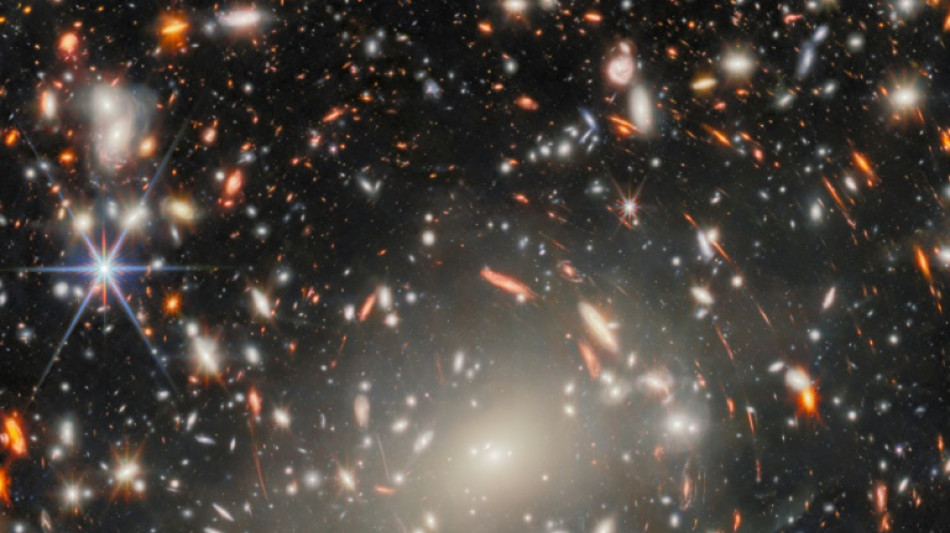

Webb telescope captures deep view of ancient galaxies
The James Webb space telescope's deepest view of a single target yet depicts spinning arcs of light that are galaxies from the universe's distant past, the European Space Agency said Tuesday.
The new image took the world's most powerful telescope more than 120 hours to capture, making it the longest Webb has ever focused on a single target.
It is also "Webb's deepest gaze on a single target to date", the European Space Agency (ESA) said in a statement, making the image one of the deepest ever captured of the cosmos.
At the bright centre of the image is a massive cluster of galaxies called Abell S1063, which is 4.5 billion light years from Earth.
But it is not the true target.
Such huge celestial objects can bend the light of things behind them, creating a kind of magnifying glass called a gravitational lens.
Therefore the "warped arcs" spinning around the Abell S1063 are what really interest scientists, the ESA said in a statement.
Because looking into distant space also means looking back in time, scientists hope to learn how the first galaxies formed during a period known as the Cosmic Dawn, when the universe was only a few million years old.
The image includes nine separate shots of different near-infrared wavelengths of light, the ESA said.
Since coming online in 2022, the Webb telescope has ushered in a new era of scientific breakthroughs.
It has also revealed that galaxies in the early universe are far bigger than scientists expected, leading some to suspect there might be something wrong with our understanding of the cosmos.
S.Lindstrom--StDgbl






